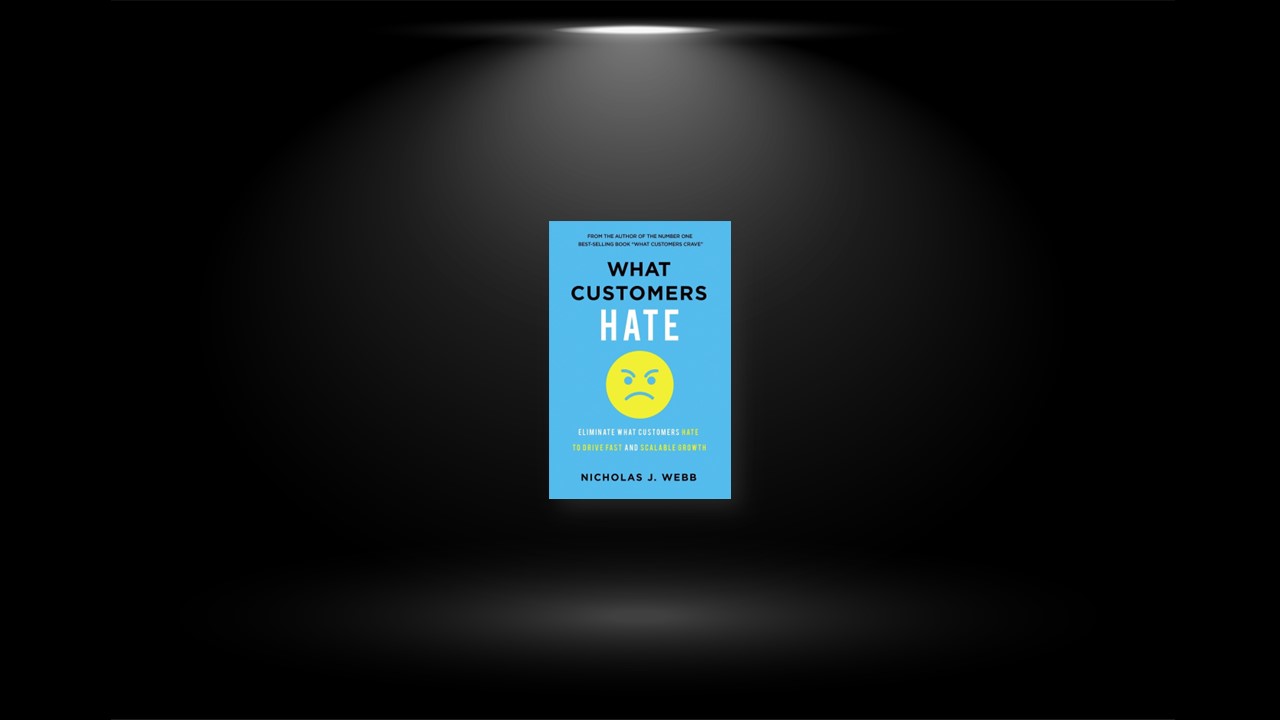Your Customers Hate You. Get Used to It!
Every sales transaction involves a process. Sometimes the process is very brief, almost perfunctory, while other times it can be prolonged, even over a period of months in B2B settings or in the consumer world for a major purchase such as a house or commercial property. Regardless of its length or complexity, customers always want to feel good about the process of selecting, buying, and using the product, and they want it to go smoothly.
The customer experience can be mapped out along a series of five “touchpoints”. Suffice to say that at every touchpoint, you have the opportunity to amaze and delight your customer and make them fall in love with you. You also have an equal opportunity to turn them off, discourage them, and even make them hate you. Every touchpoint can become either a lovepoint or a hatepoint.
Touchpoint #1: The Pre-Touches
In terms of your marketplace reputation, you may think that “no news is good news”—that is, unless a customer complains to you directly, then your reputation in the marketplace must be good. Unfortunately, this is a very naïve point of view that can cost you dearly.
Your customers may form an opinion about your company, brand, or service long before you have any direct contact with them. In these pre-touch moments, they may hold tremendous hate derived from some third-party source. You owe it to your brand to constantly monitor what’s being said about your company on social media and other means of communication. Also, make sure your employees are happy and therefore won’t be a source of negative talk.
Touchpoint #2: The First Touches
Here are the four overall customer personas, each with their own set of expectations.
#1: The Driver These are goal-oriented decision makers. They enter your store—either brick-and-mortar or online—armed with the knowledge of what they want. If they see what they want, they’ll buy it on the spot. They want as frictionless an experience as possible.
#2: The Analytical This customer wants detailed information about the product or service. They need facts and figures, and they love to ask questions. They do their homework, and pore over every possibility before making a purchase. Much like Drivers, they don’t seek small talk. They like to stay on topic while still discussing each option to ensure they are making the right decision.
#3: The Amiable The polar opposite of the Driver, this customer wants you to be their friend. To them, it’s very important that you understand them and why they want the product or service. They have a strong need to belong and relate to a group. They don’t just do business; they want to include you in their network of friends. Intensely loyal, they have a circle of professionals attached to every need in their life—the same doctor, lawyer, mechanic. Out of fear of having to trust someone new, they rarely stray from the group. They are dependable, “go with the flow,” customers that want the best for everyone around them.
#4: The Collaborator Collaborators need to make decisions that are supported by a consensus. They might bring their friends or family members into your store to help them make a selection. Because Collaborators tend to be tactful and adaptable, they’re often pleasant to work with. The downside is that they will rarely make a decision on the first visit and may take repeated touches because they need their group to reach a consensus. This is the person who will say they need to ask their spouse or partner before they commit. In the B2B world, they may delay a purchasing decision so they can run the idea by their teammates.
The first touchpoints are critical, because this is when the prospect has the opportunity to base their judgment of the company on an actual interaction. It’s imperative that your people are trained to recognize and interact with the four main types of customers: the Driver, the Analytical, the Amiable, and the Collaborator. Each persona includes adults of all ages, ethnicities, and gender identification. Your customer-facing people need to quickly identify which persona has approached them (or they are approaching), and instantly adapt to their personality.
Touchpoint #3: The Core Touch
Here in the core touch moments, the sale is made. Money changes hands. The mission of the company has been fulfilled.
A lot can go wrong, which will produce a customer who may have bought your product or service but who is unhappy with the experience. Remember, just because your customer has made a purchase does not mean that he or she is 100 percent in love with your company, brand, or service. Pay particular attention to any elements of “fine print” in contracts or fulfillment issues that can ignite hate. And be sure that your salespeople are well trained and focused on customer happiness!
If appropriate, ask them to take a quick RealRatings survey to find out what they hated and loved about their transaction.
Touchpoint #4: The Last Touches
Comcast is a good example of a company that was hated by its own customers, then saw the problem, owned the problem, and took a massive, company-wide effort to change the hate into love. It’s not rocket science. It’s all about having the fortitude to embrace innovation, inspire your employees, and do the right thing for your customers.
After the sale is made, you need to think about two things: your customer as a brand ambassador, spreading the good word about your company, brand, or service; and your customer becoming a repeat buyer who comes back time and time again.
Identify and correct any and all sources of hate at this stage. Take heart in knowing that no matter how much your customers hate your company—like the way they hated Comcast in the 1990s and well into the 21st century—it’s never too late to stage an intervention and get on the right track. Remember that innovation needs to play an important part, because customers have increasingly powerful and immediate ways of voicing their love or hate for your company.
Touchpoint #5: The In-Touch
It’s important to stay connected with your customers after their experience with you has ended. You must approach this with an absolute commitment not to sell them anything, but rather to consistently and pleasantly provide them with ongoing value. You want them to willingly come back to you of their own accord, not because you’re shoving some “One time only!” shenanigans down their throats.
After the sale is complete, your customer returns to the vast pool of prospects. But now you have a positive history with them, and if they want to buy again, yours is the sale to lose. Your job is to stay in touch with them, and not by harassing them with sales pitches but by sending them news and offers. Make them “part of the family,” but keep it low key.
Ensure your employees are fully engaged, know the organization’s mission, and are happy to be at work every day. You cannot possibly drive down the hatepoints if your employees are the source of them!
Stop Focusing Only on What You Think Customers Want
Contrary to popular mythology, all successful entrepreneurs, whether selling to consumers or in the B2B space, have a keen grasp of what their customers want and don’t want. They don’t get this priceless information by intuition alone. There is no “secret shortcut” to knowing what your customers love and hate. It takes hard work and a willingness to hear difficult truths about what your customers want that may contradict your personal opinion.
Having said that, it’s very possible that if you, as a consumer, hate something, it’s likely that millions of other people hate it, too. This is the key to invention. It’s all about seeing a problem in the marketplace and having what it takes to solve it: technology, willpower, and funding. Look at your organization and the market and ask yourself: “Where can we remove friction and make the customer experience as positive as possible?”
Tough Choices in the Real World
While perfection may be an ideal, it will never be attained. You cannot reach it in all four key areas of low price, fast service, best quality, and high ethics. To attain one, another must decline, and the hatepoints will accumulate.
Consequently, running a business is a balancing act. As a decision maker, you must prioritize what you want your customers to love you for, and try to minimize what they will hate you for. Then you must craft your marketing effort to be in alignment with reality. Your customer will hate you less if you are up front about what you value and the negative aspects you expect your customer to tolerate.
Happiness As a Strategy
If you embrace the idea that if you reduce the hatepoints felt by your customers, they will reward you with their credit cards, then you should also embrace the idea that if you reduce the hatepoints felt by your employees, they will reward you with greater productivity, lower attrition, higher engagement, and better customer relations. Statistics show that unhappy employees are more expensive to a company than are happy employees.
Analyze all of your employee engagement data, and then make a plan to improve each data point by 10 percent every year. For example, if the average customer-facing employee works in their position for two years and six months before leaving the company, then set a new goal of two years and nine months, then three years. What do you need to do to keep them happier longer?


